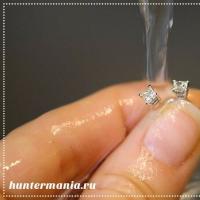How to make a mouse from plasticine step by step. How to make a mouse from plasticine? Cheese made from plasticine
Little gray mice are inconspicuous inhabitants of storerooms and basements. Many people are even afraid of these nimble little animals. We invite you to make a completely non-scary plasticine copy of a mouse and have fun with your children. Classes with plasticine allow you to experiment, because in the process of work you can get creative, using different colors and creating all kinds of shapes. Detailed information on sculpting an animal figurine will make the task easier, help you have fun, and not think about how to carry out this process.
Materials for sculpting a mouse:
Gray plasticine is the main color;
Pink, white, blue and black plasticine are auxiliary shades;
Matches.
How to make a mouse from plasticine
The proposed craft is made on the basis of gray plasticine, but it is not forbidden to replace it with another brighter color. Focus on the presence of blocks in the plasticine set. If there is no gray and you don’t want to change the color, mix black and white until you get the desired shade.

Start the exciting process by softening the modeling mass. Roll into a ball. 
Turn the resulting ball into a mouse head. To make the resulting toy look cute, make the head larger than the body. Place a small sharp bump on the ball, a pink nose on the most protruding point, and draw a mouth under the bump. Also press the ball with your fingers on all sides to slightly stretch it.

Prepare gray and pink rounds (the second should be half the size of the first) for sculpting the ears. 
Attach the ears to the head. Press the holes for the eyes with your fingers. 
Insert white and blue cakes into the recesses. 
Attach black flappers, white highlights and eyelashes. 
To sculpt the body, prepare half a match and a very small (compared to the head) ball. 
Pull the ball into a pear. Insert half a match into the narrower part of the workpiece. 
Prepare gray cakes and thin tubes of the same color for sculpting the paws. Fasten the pieces together. Make soft pads on your feet using pink dots.

Attach the bottom legs to the craft. 
Add the upper limbs. They can be made from simple gray tubes. 
And the last part of the mouse’s body is its long tail. Pull the plasticine into a thin sausage. 
Attach the ponytail at the back. 
So the little mouse is ready. This craft is a great toy, because the mouse is the heroine of many favorite Russian folk tales. 
Many people are delighted with bright blocks of plasticine, because you can make any craft from it with your own hands. Children treat this pliable material with special trepidation; they definitely need to be shown some kind of modeling master class; they will be happy to repeat the actions of adults and make their own masterpiece.
This lesson will allow parents to navigate and help their child with his work. Here is a step-by-step description of the process of sculpting a small mouse from plasticine, illustrated with photographs. After studying this manual in more detail, you will learn how to make a mouse from plasticine with your own hands.
1. Of course, a realistic mouse can be made from gray plasticine; this shade is present in large sets. But if this is not available, invite your child to mix different bars and achieve the desired color. For example, you can combine white, black and a drop of blue material, or replace blue with brown. The simplest option is a mixture of white and black. Any of the possible options can be used to create crafts.
2. From the prepared material, mold the body and head of the mouse in the form of two ovals of different formats.


4. Make eyes from white and black plasticine or from beads of any color. Place the black ball on the tip of your nose and shape your mouth with a spatula. Place round ears on both sides of the crown.

5. The easiest way to make the upper legs is to sculpt two sausages with fingers at the ends, cut them with a spatula.

6. Attach the legs to the body.

7. Do the lower limbs in the same way and attach them in place.

8. Finish sculpting the mouse with a long tail from the same gray plasticine.

9. From yellow and orange plasticine, mold a triangular piece of cheese to treat your rodent with this delicacy. Make holes in it with a pencil or any other pointed object.

10. Now the child can play with the craft made together with adults.

The final look of the craft.
So we have a cute mouse! We hope you and your children enjoyed this modeling master class. Next time you can also try making simple animal figures from plasticine or, for example, a cute pink kitten from plasticine.
Print Thank you, great lesson +4
If you are afraid of mice, then you need to get rid of this phobia, because these animals are so cute and miniature. We suggest you make a gray mouse out of plasticine and place this wonderful craft in the most visible place to periodically meditate and get rid of your own fears. Making animal figures from soft mass is always interesting; you can captivate your child for a long time with such work, and then brag about your joint achievements to other household members.
Other lessons on the topic of pets:Step-by-step photo lesson:
Plasticine colors: a lot of gray; two pieces of black and white.
Naturally, the mouse can be made not only gray, but also white or beige. You can repeat all stages of sculpting with other colors. Or maybe you want to create a whole family of miniature rodents. So, knead the plasticine in your hands and get started.

From the prepared ball, make a part that resembles the outline of a mouse; the back, neck and head should be clearly visible.

Attach a black bead to the pointed nose. Attach miniature eyes just above the nose.

Just above the eyes, attach two gray pancake ears. So the appearance of a rodent is ready.

The hind limbs of the animal should be more massive than the forelimbs. Make two identical parts: tubes and wider cakes.

Attach all four parts, placing them symmetrically.

Roll up another piece - a long thin tail from the remains of gray plasticine.

Attach the ponytail at the back.

That's all, you can finish your work, cool the craft and admire the fruits of your creativity.

One of the simplest and most accessible forms of creativity for children and adults is modeling from plasticine. And most often, when playing with children, we sculpt animals. In this post we will tell you how easy it is to make a mouse from plasticine.
Following simple instructions and step-by-step illustrations, we can easily make a mouse from plasticine with our own hands, which will be a real work of art. You will feel like a real professional sculptor.
As a working material, you can use something made by yourself, or even tinted. This is especially true when you need to make a fairly large craft.
So, let's get down to work. We will need material in three colors - white, black and pink. Naturally, you can choose others or add to this list. Let's start with the head of a plasticine mouse.
Using your hands, roll it into an oval of the required size. To prevent your hands from sticking together, before starting to work with plasticine. Moisten them a little. Using a stick, we form a mouth and press down the places where the eyes are planted. Then we roll up two small ears and attach them to the head. We make eyes and a nose. We make eyebrows and cover the ears with white.

When the head of the plasticine mouse is ready, we can proceed to the next stage - the body and legs are next. Roll into an oval that widens at the bottom. This is our little mouse's belly. You can stick a white piece in the shape of a rounded heart on your belly. Then we roll up the legs and arms and attach them to the body.



